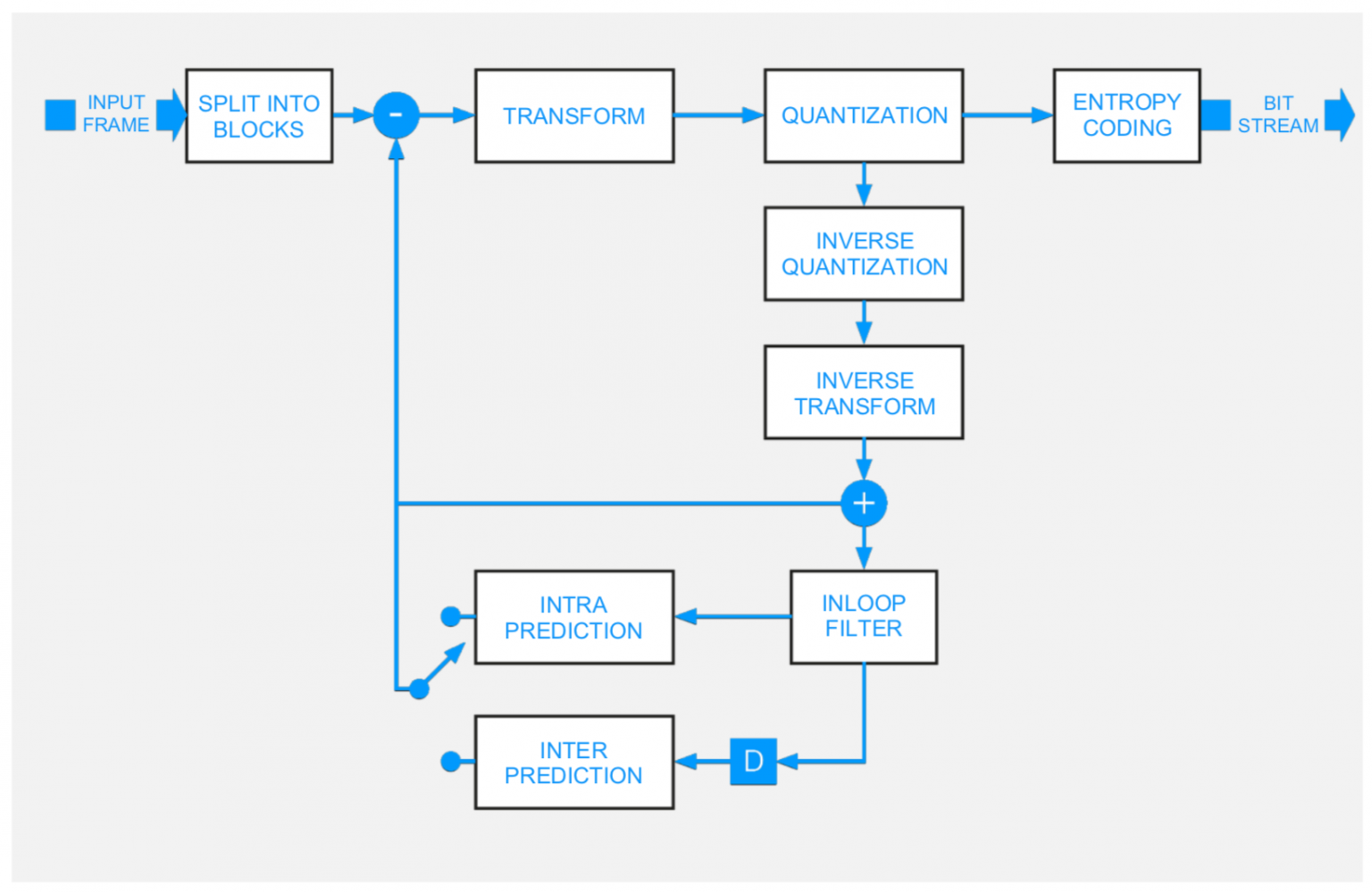AV1 is a Copy Cat Codec
AOMedia asserts that AV1 is open source as if magically constructed without the use of existing patented technologies. A recent article in the Beamr blog contradicts this and shows how AV1 uses many of the same building blocks used by other codecs. Specifically, the Beamr article compared AVC, HEVC, AV1, EVC, and VVC, and made the following observations regarding the technologies incorporated in AV1 and the other codecs (emphasis supplied).
Hybrid block-based coding – “All these codecs use a hybrid block-based coding approach, meaning the encode is performed by splitting the frame into blocks, performing a prediction of the block pixels, obtaining a residual as the difference between the prediction and the actual values, applying a frequency transform to the residual obtaining coefficients which are then quantized, and finally entropy coding those coefficients along with additional data, such as Motion Vectors used for prediction, resulting in the bitstream.”
Partitioning – “We will begin with a look at the block or partitioning schemes supported. The MBs of AVC are always 16×16, CTUs in HEVC and EVC-Baseline are up to 64×64, While for EVC-Main, AV1 and VCC block sizes of up to 128×128 are supported. As block sizes grow larger, they enable efficient encoding of smooth textures in higher and higher resolutions.”
Prediction – “All video codecs from AVC onwards employ both INTRA prediction, where the prediction is performed using pixels already encoded and reconstructed in the current frame, and INTER prediction, using pixels from previously encoded and reconstructed frames…EVC-Baseline supports only 5 INTRA prediction modes, EVC- Main supports 33, HEVC defines 35 INTRA prediction modes, AV1 has 56 and VVC takes the cake with 65 angular predictions.”
Filtering – “In-loop filters have a crucial contribution to improving the perceptual quality of block-based codecs, by removing artifacts created in the separated processing and decisions applied to adjacent blocks… Wrapping up with AV1, a regular DB filter is used as well as a Constrained Directional Enhancement Filter (CDEF) which removes ringing and basis noise around sharp edges, and is the first usage of a directional filter for this purpose by a video codec. AV1 also uses a Loop Restoration filter, for which the filter coefficients are determined by the encoder and signaled to the decoder.”
Entropy coding – “The entropy coding stage varies somewhat among the codecs, partially due to the fact that the Context Adaptive Binary Arithmetic Coding (CABAC) has associated royalties… AV1 uses non-binary (multi-symbol) arithmetic coding – this means that the entropy coding must be performed in two sequential steps, which limits parallelization.”
In their launch materials, AOMedia stated that “AV1 is designed from the ground up, to create a high quality, royalty-free video codec.” Even a cursory examination of the key building blocks reveals that this isn’t the case, and in fact, AV1 relies on many patented technologies, including all those included in the Sisvel AV1 patent pool."
